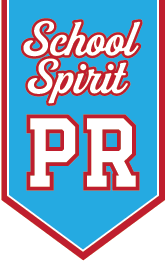As a school superintendent, your role is pivotal in shaping the educational landscape of your district. You are responsible for academic excellence and fostering positive relationships with stakeholders, including students, parents, teachers, and the wider community. In today’s digital age, effective communication is more critical than ever, and having a well-thought-out communication plan is no longer a luxury but a necessity. Think of it as your playbook outlining a strategy to ensure messaging is clear, consistent, and impactful. Here are seven reasons to make sure your district has a communication plan:
- Build Trust and Transparency: A communication plan helps establish trust and transparency with your stakeholders. You demonstrate accountability and keep your community informed by consistently sharing information about district initiatives, achievements, and challenges.
- Manage Crises Effectively: In a crisis, such as a natural disaster or a safety threat, having a communication plan in place can be a lifesaver. It lets you quickly disseminate critical information, reassure concerned parties, and coordinate response efforts.
- Enhance Parental Engagement: A communication plan can help you engage parents more effectively in their children’s education. You can encourage parental participation and support by providing regular updates on school activities, academic progress, and opportunities for involvement.
- Support Student Success: Effective communication is key to supporting student success. A well-designed plan can ensure that students receive timely information about academic programs, extracurricular activities, and support services, helping them thrive in their educational journey.
- Strengthen Community Relationships: Your district is an integral part of the community, and a communication plan can help you strengthen relationships with local businesses, organizations, and government agencies. You can foster a sense of pride and collaboration by highlighting your district’s achievements and contributions.
- Promote a Positive Image: A proactive communication plan can help you shape the public perception of your district. You can create a positive image that attracts students, staff, and community support by showcasing your achievements, sharing success stories, and addressing misconceptions.
- Navigate Digital Challenges: School districts face unique communication challenges in today’s digital world, such as social media scrutiny and online misinformation. A communication plan can help you navigate these challenges by providing guidelines for engaging with digital media and responding to online feedback.
A communication plan is a strategic tool that can help you build trust, engage stakeholders, and enhance the overall success of your district. Just as a coach relies on their playbook to lead their team to victory, you can rely on your communication plan to lead your district to success. So, if you haven’t already, it’s time to develop your communication playbook and watch as your district’s communication efforts soar to new heights.
Need help creating your communication plan? Contact us today!







